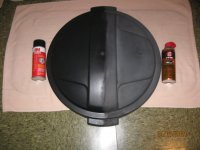I try wd40 silicone spray to clean my weather strip . It’s just clear fluid come out . Not much of silicone . And it’s dried too quickly into the weather strip . I feel it doesn’t give much silicone .
Few years ago I try permatex silicone spray in blue can . And it’s have a lot white silicone when I spray it and it leave a kinda wet shiny film onto the weather strip. Compare to wd40 clear silicone .
my OREILLY no longer order them .
Few years ago I try permatex silicone spray in blue can . And it’s have a lot white silicone when I spray it and it leave a kinda wet shiny film onto the weather strip. Compare to wd40 clear silicone .
my OREILLY no longer order them .

